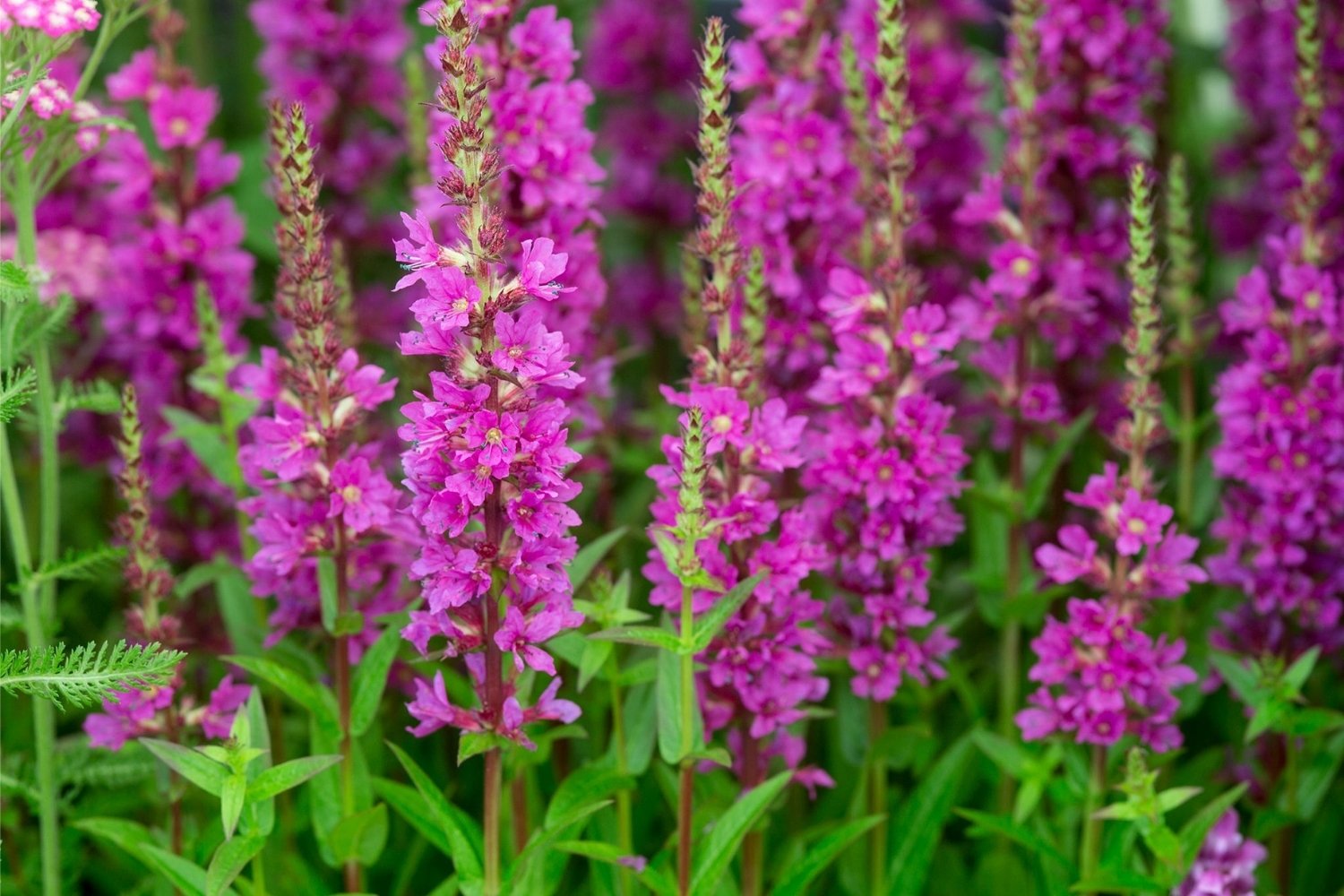
Lythrum, commonly known as loosestrife, is a fascinating plant with a rich history and unique characteristics. Did you know that Lythrum species can thrive in both wet and dry environments? This adaptability makes them a favorite among gardeners and landscapers. However, not all Lythrum species are welcome everywhere. Some, like the purple loosestrife, are considered invasive in certain regions, causing significant ecological concerns. Despite this, Lythrum remains a subject of interest for botanists and nature enthusiasts alike. From its vibrant flowers to its role in traditional medicine, there's much to learn about this intriguing genus. Dive into these 33 facts to uncover the many facets of Lythrum!
Lythrum: A Fascinating Plant
Lythrum, commonly known as loosestrife, is a genus of flowering plants that has intrigued botanists and gardeners alike. With its vibrant colors and unique characteristics, Lythrum offers much to learn and appreciate.
-
Lythrum belongs to the Lythraceae family, which includes around 32 genera and 620 species.
-
The most well-known species is Lythrum salicaria, also known as purple loosestrife.
-
Purple loosestrife is native to Europe, Asia, and northwest Africa.
-
This plant can grow up to 2 meters tall, making it quite a striking presence in any garden.
-
Lythrum flowers are typically pink, purple, or magenta, adding a splash of color to wetlands and gardens.
Ecological Impact of Lythrum
Lythrum has a significant impact on the ecosystems it inhabits. Understanding these effects can help manage its growth and preserve native species.
-
Purple loosestrife is considered an invasive species in North America.
-
It was introduced to North America in the early 19th century, likely through ship ballast and imported wool.
-
This plant can form dense stands that outcompete native vegetation.
-
Its dense growth can alter wetland ecosystems, affecting water flow and habitat availability.
-
Despite its invasive nature, Lythrum provides nectar for bees and butterflies.
Uses and Benefits of Lythrum
Beyond its ecological impact, Lythrum has various uses and benefits that make it a valuable plant in certain contexts.
-
Lythrum has been used in traditional medicine for its astringent properties.
-
It has been employed to treat diarrhea, dysentery, and other gastrointestinal issues.
-
The plant contains tannins, which contribute to its medicinal properties.
-
Lythrum can be used in natural dye production, yielding shades of yellow and green.
-
Gardeners appreciate Lythrum for its ornamental value, especially in water gardens and ponds.
Interesting Facts About Lythrum
Lythrum's unique characteristics and history make it a plant worth knowing more about. Here are some intriguing facts that highlight its distinctiveness.
-
Lythrum plants have square stems, a feature they share with mint family members.
-
The genus name "Lythrum" comes from the Greek word "lythron," meaning blood, referring to the plant's red sap.
-
Lythrum salicaria has been used to create hybrid plants with other Lythrum species.
-
These hybrids can exhibit a range of flower colors and growth habits.
-
In some regions, Lythrum is cultivated as a honey plant due to its abundant nectar production.
Challenges in Controlling Lythrum
Managing the spread of Lythrum, particularly purple loosestrife, poses several challenges. Effective control methods are essential to protect native ecosystems.
-
Mechanical removal of Lythrum can be labor-intensive and may not be effective long-term.
-
Chemical herbicides can be used, but they may harm non-target species.
-
Biological control methods, such as introducing natural predators, have shown promise.
-
The Galerucella beetle is one such predator that feeds on Lythrum leaves and stems.
-
Integrated management approaches combining mechanical, chemical, and biological methods are often most effective.
Lythrum in Culture and Folklore
Lythrum has also found its way into cultural practices and folklore, adding another layer to its fascinating story.
-
In some cultures, Lythrum was believed to ward off evil spirits.
-
The plant was sometimes used in love potions and charms.
-
Lythrum has been featured in poetry and literature, symbolizing resilience and beauty.
-
In Victorian flower language, giving someone Lythrum meant "pretension."
-
The plant's vibrant flowers have inspired artists and gardeners for centuries.
Conservation Efforts for Lythrum
Despite its invasive nature, efforts are being made to conserve certain Lythrum species and manage their impact on native ecosystems.
-
Conservationists work to protect native Lythrum species in their natural habitats.
-
Restoration projects aim to rehabilitate wetlands affected by invasive Lythrum.
-
Public awareness campaigns educate people about the importance of controlling invasive species like purple loosestrife.
Final Thoughts on Lythrum
Lythrum, commonly known as loosestrife, is a fascinating plant with a rich history and diverse uses. From its vibrant purple flowers to its medicinal properties, this plant has captured the interest of botanists and gardeners alike. Its ability to thrive in wetland areas makes it both a beautiful and practical addition to many landscapes.
However, it's important to remember that certain species, like the purple loosestrife, can become invasive and disrupt local ecosystems. Always check local guidelines before planting to ensure you're making an environmentally responsible choice.
Whether you're drawn to its aesthetic appeal or its historical significance, Lythrum offers something for everyone. Its resilience and beauty make it a standout in the plant world. So next time you see those striking purple blooms, you'll know a bit more about the fascinating plant behind them. Happy gardening!
Was this page helpful?
Our commitment to delivering trustworthy and engaging content is at the heart of what we do. Each fact on our site is contributed by real users like you, bringing a wealth of diverse insights and information. To ensure the highest standards of accuracy and reliability, our dedicated editors meticulously review each submission. This process guarantees that the facts we share are not only fascinating but also credible. Trust in our commitment to quality and authenticity as you explore and learn with us.
